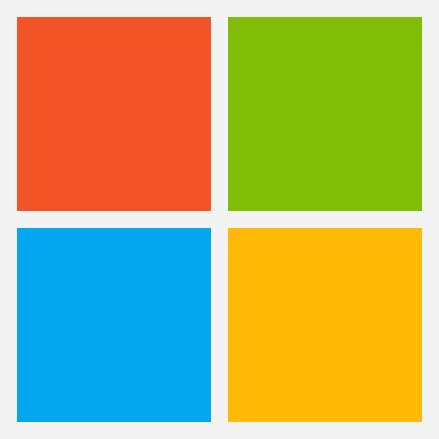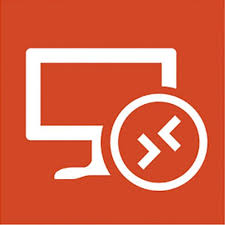Throughout the last couple of years, I have written and published multiple cheat sheets. Topics include, but are not limited to Cloud, the FMA, Citrix printing, application layering, IoT, IOPS, and more. Looking at my statistics I can see that these articles (or small e-books) are by far the most popular, even the older ones. Because of this, and because I like to have them organized myself – they really come in handy from time to time – I decided to bundle them all onto a single page. The ultimate cheat sheet page, if you will.

This Cheat Sheet focuses on 7 remote video conferencing and online meeting software solutions, including a couple of the most well-known names/vendors. RISK SCORES included. They all offer a ton of (sub) features, add-ons, plugin options, and so on, too much to mention. Of course, there is a great deal of overlap as well. I tried to focus on some of the main areas that most of you will be interested in, at least to start out with. Downloadable sheet available.

During Microsoft Ignite 2019, in Orlando, Florida the Windows Virtual Desktop was a hot topic. A ton of announcements were made, almost too much to get a grip on. I took some time to sort them all out and dig in a bit deeper. The result, a cheat sheet holding all major, minor and community WVD announcements, straight from Ignite (including some personal thoughts) on a single A4 page (barley). And I can tell you, it’s much more than you think or have seen previously.

A few months ago, when Windows Virtual Desktop was still in tech preview I published v1.0 of this sheet. A few weeks ago a bunch of new partners were officially announced and added to the WVD ecosystem, making it 13 in total. This sheet provides you with a brief and clear overview on all companies and technologies/products involved.

This cheat sheet will provide you with an overview of all currently known and announced Microsoft WVD technology partners, and what they bring to the table. In a nutshell, of course but it should give you an idea on their added value.

After publishing the Cloud services cheat sheet as well as a blog post containing 83 facts on the WVD, I thought, what if I put one and one together? So, here you go. My cheat sheet concept and layout combined with a ton of information on the latest developments around Microsoft’s most recent Cloud workspace initiative – the Windows Virtual Desktop.
The amount of (positive) feedback I have gotten on this particular sheet has been overwhelming, to say the least. Again, I have added and updated multiple columns including Big Data/Warehousing and Ping/latency times (visuals included) to the various European Data centers (from all three vendors) next to a few smaller updates. Note that I performed two separate Ping tests, one using standard ICMP and a second one using HTTP requests.

About two and a half years ago I published the first version of the ultimate Citrix XenDesktop 7.x internals cheat sheet and it turned out to be a big hit. In the meantime, it has been viewed over 100.000 times already. All the more reason to start working on version 2.0. Since I have been writing about Citrix technologies for the last couple of years I have built up a broad archive, which I can now partly (re) use and re-write to come up with an even more detailed edition, version 2.0 of the 7.x internals cheat sheet.
This e-book will tell you everything there is to know about Citrix native printing. I like printing. There, I’ve said it. It’s not that I have implemented dozens of complex print architectures, no, a couple, but far from many. I just like the technology and processes behind it. Especially since printing is considered business critical at almost all customers I have visited. While the reasons for this may vary, imagine this, and I’m sure you’ve seen it as well; a user receives an important e-mail, or perhaps he or she has come across an interesting white paper or another type of document, what will be one of the first things they’ll do? They will print it. This e-book will tell you everything there is to know about Citrix native printing.
IOPS, we need as many as possible and as such we are constantly on the look out for new ways to boost performance. No matter what kind of infrastructure we build, virtual or physical, or what ever products we use, in the end it all comes down to the end user experience. Topics often relate to flash like storage solutions, converged infrastructures, Citrix provisioning services, Machine Creation Services, or a combination of the above.
An overview on the current state of application layering. Not only from a feature/functionality perspective but from a vendor/company perspective as well. From now on I will be focusing on the big three: Citrix, with App Layering – former Unidesk, VMware App Volumes and Liquidware FlexApps.

Today thousands of companies worldwide are using, or are on the verge of adopting Microsoft Office 365, with Exchange, or email in/from the cloud being the number one use-case. This solution is often delivered through a non-persistent Workspace meaning, RDSH, like XenApp, or pooled VM’s as part of a VDI. Since a direct connection to Azure, a.k.a. Online mode doesn’t perform well, Office 365 is usually deployed in Offline mode. In the case of Exchange, this means that the .OST file is stored (cached locally) in the user’s profile, which leads to large profiles and long (er) login times.
I highlighted 6 of the most common (and upcoming) (I)IoT networks including their main characteristics and features. In this sheet the focus lies on the various individual networks mentioned like: Sigfox, LoRa, NB-IOT etc. and talk a bit more about their background and future potential.
As mentioned, the guide consist out of 80 + notes which include general tips, lessons learned, several how to’s, recommendations and a bunch of Citrix best practices, and although some might be described in more detail than others that doesn’t mean that they are less important. It’s over sixteen pages long and consists out of 5600 + words, hopefully this guide can, and will, assist you in deploying Citrix XenMobile by highlighting some of the most common pitfalls, which unfortunately, are not known by everybody.

